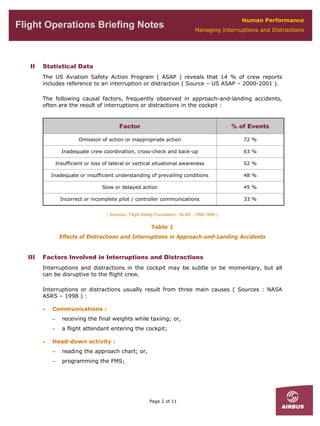Interruptions and distractions are the main threats to flight crews and can lead to errors. Communications, head-down work, and responding to abnormal situations are the primary causes. Strict adherence to procedures like the sterile cockpit rule during critical phases of flight can help minimize disruptions. When interrupted, crews should identify what they were doing, where they were interrupted, and how to get back on track according to priority of tasks.










